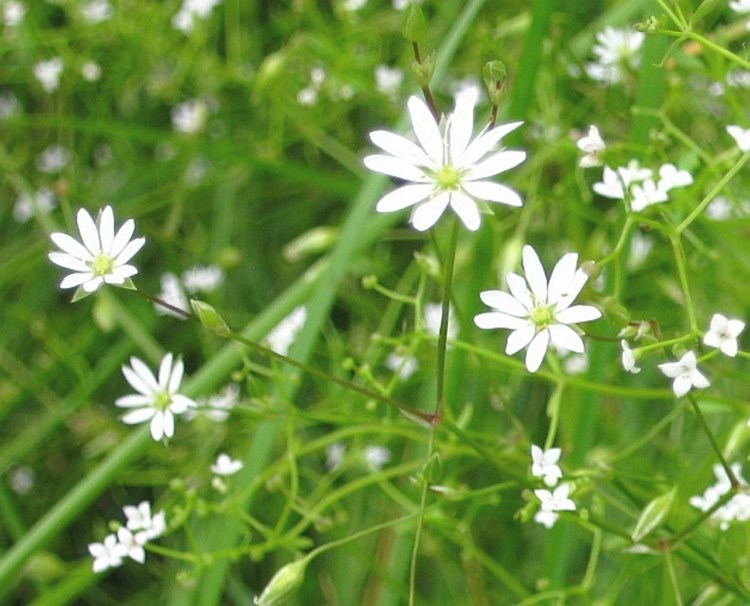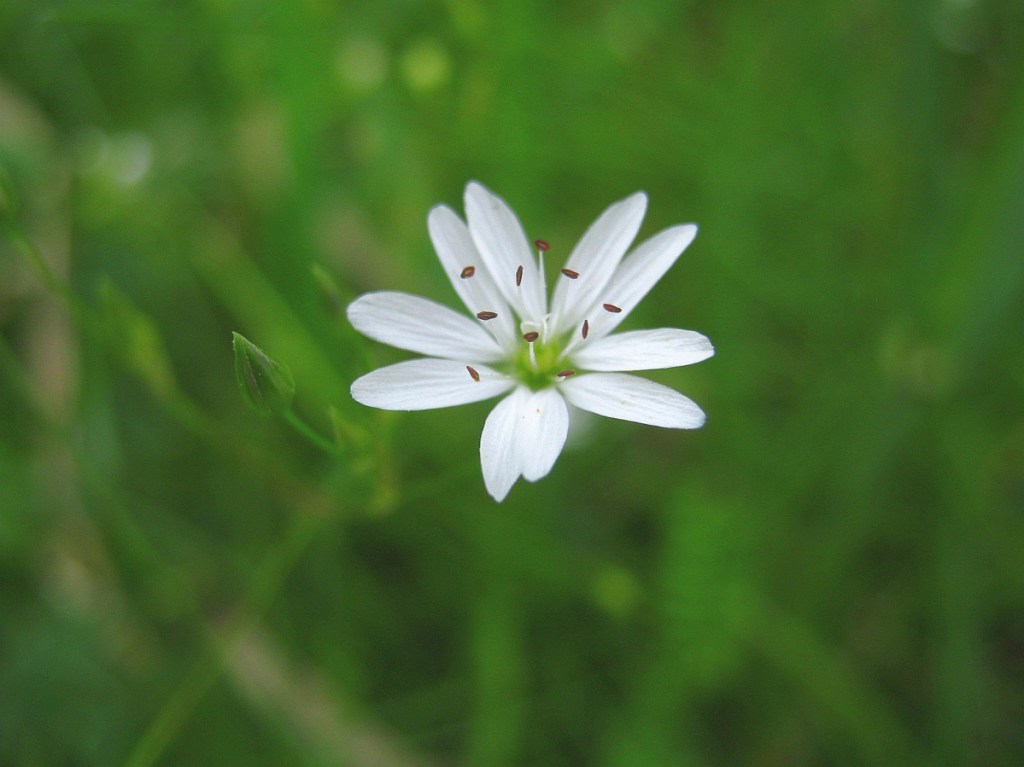Call me crazy, but I’m getting confused on the difference between flowers and stars.
It started in May, as it always does, when my tiny grove of Trientalis borealis popped out under the oaks and beeches at the edge of the yard. The seven-rayed white blossom is half an inch or so across and lies on a whorl of lance-shaped leaves, practically twinkling. They are actually called starflowers.
The oxeye daisies and black-eyed susans that are brightening up the fields now are stars by etymology too — they’re all “asters,” Greek for star, because their petals fan out like starlight. Soon we’ll be seeing sunflowers, more asterisms.
Now, stars do not actually throw out spiky individual rays. They radiate light more or less uniformly through space. But being so far away — from a few to millions of light-years — their light spreads out through space, diminishes in brightness, and gets bent and refracted by the Earth’s atmosphere into what looks like twinkling. In binoculars or a camera lens, spikes or rays seem to fray at the edge of each spot of light. Closely grouped stars blur together in clusters and galaxies that appear to be single spots but are millions or billions of stars, each with its own radiations blending into the others.
A lot of flower blossoms are no bigger than a star is to your eye. Wild madder and other bedstraws grow in fields and roadsides on tangles of stems that are virtually invisible from a distance, and their tiny four-rayed blossoms, less than a quarter-inch wide, are packed together like little Pleiades or Hyades. The wild madder blossoms are so numerous and close they strike your eye like trailside galaxies — billions of stars like a cloud.
The tiny white flowers on chokecherry bushes unify into cylindrical sprays, or racemes, from a distance. Umbels of Queen Anne’s lace in the shape of elliptical galaxies are made of scores of little blossoms, and grow as if suspended over July and August fields in groups, like space telescope images of the edge of infinity.
One night I dreamed about stitchwort blossoms. I am not making this up.
Lesser stitchwort is a chickweed called by botanists Stellaria graminea. Its flowers are white stars, half an inch or so across, of five petals so deeply cleft they look like 10.
They spread out along tendrils in tall grass like spray from the Milky Way.
In the dream I was trudging along the edge of a field. Magnified stitchwort blossoms appeared and disappeared in the grass. Soon there were dozens, thousands, ten thousand, billions and billions, and I was seeing each individual flower and all of them together. Then for some unknown length of dream time the flowers were stars, and my sleep, whatever sleep it was by then, became troubled and mixed up between outer space and the edge of the field.
Now, a flower is not a star even when it’s called aster or Stellaria. But at some point probably at some proximity to madness, where we should never go, they seem to cross paths.
I don’t think I’m out of my mind. But who knows?
Stars appearing so tiny and cold, yet in reality being so enormous and hot, it sort of makes you wonder what you’re actually seeing there in the wild madder.
Dana Wilde lives in Troy. His recent book is “Summer to Fall: Notes and Numina from the Maine Woods” available from North Country Press. You can contact him at naturalist1@dwildepress.net. Backyard Naturalist appears the second and fourth Thursdays each month.
Send questions/comments to the editors.




Comments are no longer available on this story